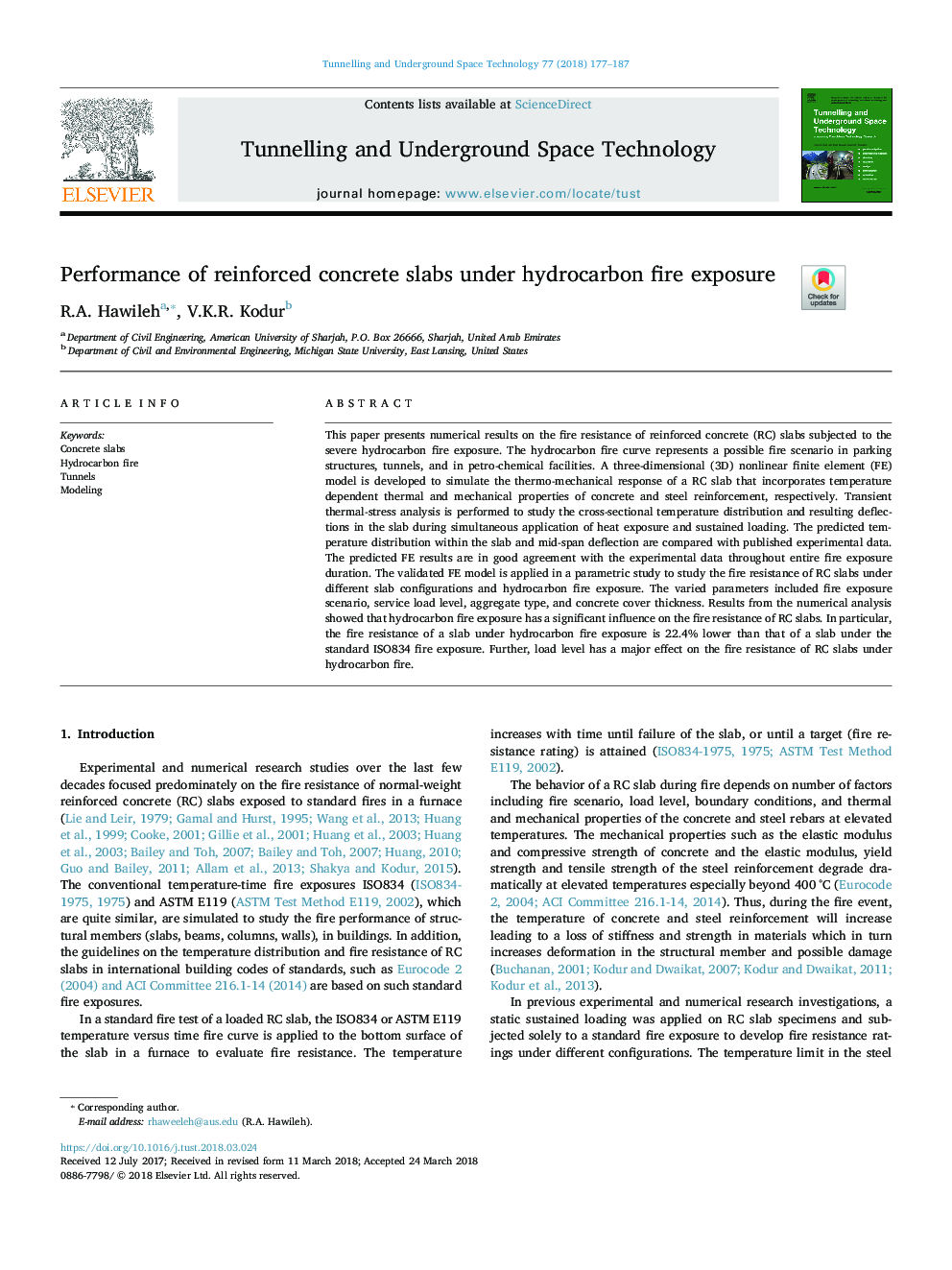| Article ID | Journal | Published Year | Pages | File Type |
|---|---|---|---|---|
| 6782484 | Tunnelling and Underground Space Technology | 2018 | 11 Pages |
Abstract
This paper presents numerical results on the fire resistance of reinforced concrete (RC) slabs subjected to the severe hydrocarbon fire exposure. The hydrocarbon fire curve represents a possible fire scenario in parking structures, tunnels, and in petro-chemical facilities. A three-dimensional (3D) nonlinear finite element (FE) model is developed to simulate the thermo-mechanical response of a RC slab that incorporates temperature dependent thermal and mechanical properties of concrete and steel reinforcement, respectively. Transient thermal-stress analysis is performed to study the cross-sectional temperature distribution and resulting deflections in the slab during simultaneous application of heat exposure and sustained loading. The predicted temperature distribution within the slab and mid-span deflection are compared with published experimental data. The predicted FE results are in good agreement with the experimental data throughout entire fire exposure duration. The validated FE model is applied in a parametric study to study the fire resistance of RC slabs under different slab configurations and hydrocarbon fire exposure. The varied parameters included fire exposure scenario, service load level, aggregate type, and concrete cover thickness. Results from the numerical analysis showed that hydrocarbon fire exposure has a significant influence on the fire resistance of RC slabs. In particular, the fire resistance of a slab under hydrocarbon fire exposure is 22.4% lower than that of a slab under the standard ISO834 fire exposure. Further, load level has a major effect on the fire resistance of RC slabs under hydrocarbon fire.
Related Topics
Physical Sciences and Engineering
Earth and Planetary Sciences
Geotechnical Engineering and Engineering Geology
Authors
R.A. Hawileh, V.K.R. Kodur,
